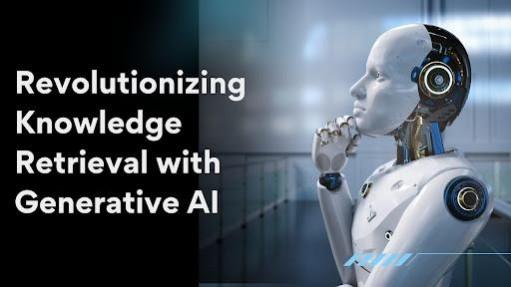
In an era where data is expanding exponentially, businesses are finding it increasingly challenging to manage and retrieve meaningful insights from fragmented data systems. Nishant Kapoor's exploration into leveraging Generative AI technologies to enhance enterprise knowledge retrieval offers a forward-thinking solution. This approach integrates Retrieval-Augmented Generation (RAG) architectures, knowledge graphs, and vector databases, promising to break down traditional data silos and enhance operational efficiency.Overcoming the Data Fragmentation Dilemma.
Unifying Fragmented Data with Generative AI
Organizations today struggle with fragmented data across systems like Product Lifecycle Management (PLM), Enterprise Resource Planning (ERP), and Customer Relationship Management (CRM). The solution integrates Generative AI to unify these isolated data sources. By connecting disparate systems, the technology enables streamlined data management, making it easier for businesses to access information across their ecosystem.
As enterprises grow their data rapidly, traditional management techniques are no longer sufficient. The introduction of advanced AI technologies is transforming this landscape, improving query processing, contextual understanding, and data integration.
A New Era in Enterprise Knowledge Retrieval
A core element of this system is the Retrieval-Augmented Generation (RAG) architecture, which enhances knowledge management by improving the accuracy of search results. By incorporating advanced indexing strategies, the system processes real-time data across enterprise systems.
The use of vector databases and semantic search techniques ensures that the system understands the context of queries, providing relevant results. This is crucial for enterprises dealing with vast data sets. By employing domain-specific embedding models, the system improves the precision of content retrieval, enhancing the user experience.
Improving Operational Efficiency and Decision-Making
One of the most impressive outcomes of this approach is its impact on operational efficiency. By reducing the time it takes for employees to find the information they need, businesses can boost productivity. The system has been shown to cut down research time by up to 75%, allowing staff to focus on more strategic tasks.
The system's ability to streamline cross-functional collaboration also plays a vital role in enhancing overall business performance. By breaking down data silos, teams can share information more effectively, leading to better resource utilization and collaboration.
Enhancing Security and Compliance in Data Management
Security and compliance are critical when dealing with enterprise data, and this approach addresses these issues effectively. By integrating role-based access control and continuous compliance monitoring, the system ensures that only authorized personnel can access sensitive data. It also implements privacy-by-design principles, ensuring that data protection measures are in place from the start.
The system's ability to maintain data lineage tracking and provide audit logs adds an additional layer of security, helping businesses navigate compliance without compromising security.
The Future of Enterprise Knowledge Management
Looking ahead, the future of enterprise knowledge management systems will be shaped by continuous advancements in AI and machine learning. Enhancements focusing on improved context understanding through multi-modal input processing are expected to meet the growing demands of businesses dealing with vast volumes of data.
These innovations will lead to more personalized experiences, ensuring the system continues to meet the specific needs of organizations over time. Increased integration with collaboration tools will further streamline workflows, making it easier for businesses to adapt.
In conclusion, Nishant Kapoor's work in integrating Generative AI with enterprise knowledge management systems represents a transformative leap in solving the challenges posed by fragmented data and siloed systems. By combining RAG architectures, knowledge graphs, and vector databases, this approach bridges traditional data silos while enhancing operational efficiency and decision-making. As businesses continue to face growing data management challenges, this innovative framework offers a scalable solution to meet modern enterprise demands. This approach provides a compelling case for the adoption of AI-powered knowledge management systems.

















